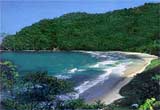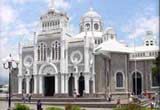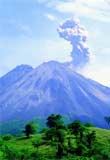
Known as the “Central American Switzerland”, Costa Rica is a small nation located in Central America. Nicaragua borders Costa Rica to the north, southeast from the Caribbean Sea, southwest with Panama and west and the Pacific Ocean is west of the nation. The country is divided in 7 provinces: San José, Alajuela, Heredia, Cartago, Guanacaste, Limón and Puntarenas. The mountainous system is divided into three ranges: Guanacaste, Central Volcánica and the Talamanca. It is known as an eco-tourism paradise due to its beauty, its biodiversity and because 25 percent of its territory has been designed to preserve its nature. The coastal areas with its National Parks and Biological Reserves offer a green paradise for eco-tourism.
The whole country is a geographic paradise full of tropical forests, sandy beaches, waterfalls, rivers, mountains and active volcanoes, in addition to its picturesque towns. There is an excellent tourist infrastructure that allows vacationers to practice mountain climbing or water sports like spectacular rafting, kayaking in Jungle Rivers or skin diving, diving, fishing or surfing.
In the Central Valley you can find the provinces of San José, Alajuela and Heredia. San José is the country’s capital since 1823 and with the largest number of inhabitants. Its natural values go together with the artistic-cultural heritage which includes its buildings, libraries, theaters, monuments and a countless number of museums and galleries.
Alajuela is one of the country’s largest and diverse provinces. Throughout its history, this country has  participated in events of important political and independent relevance. Costa Rica has a natural and cultural heritage, in addition to having two of the most popular and active volcanoes: Poás and Arenal. Heredia is one of the smallest provinces north of San José founded in 1706 and is the country’s historic heart as well as Cartago, which stands out for its colonial traditions. participated in events of important political and independent relevance. Costa Rica has a natural and cultural heritage, in addition to having two of the most popular and active volcanoes: Poás and Arenal. Heredia is one of the smallest provinces north of San José founded in 1706 and is the country’s historic heart as well as Cartago, which stands out for its colonial traditions.
The province of Cartago is located southeast of San José. In the past this province was the capital of the republic with a marked colonial tradition. From Cartago a visitor can take a chance at the Irazú volcano, still active and with an easy access that contains a long history of violent eruptions and valuable heritage, both ecological and natural.
Southeast of the province you can visit the Lankester Botanical Gardens. The Guayabo National Park, an important archeological sight is located 19 km north of Turrialba.
Guanacaste is one of the most important tourism centers in Costa Rica and one of the most extensive and less populated provinces in the country, located in the north Pacific and the its main city is Liberia. It is the starting point towards the Lomas Barbudal Biological Reserve and the Rincón de la Vieja National Parks and Guanacaste. The Miravalles, TEnorio, Orosí, Cacao and Cerro Chato volcanoes can be found in this region. In addition to its infinite beaches you have landscapes and much more sunny and dry climate then the rest of the country. 
To the south, Puntarenas, the capital of the province of the same name and the largest city in the Pacific coast located in a long and narrow peninsula in the Gulf of Nicoya. You will find a diversity of forests as well as biological reserves in some of the islands of the Gulf and the famous beaches of the Pacific, ideal for water sports. Limón also known as Puerto Limón is located in the Caribbean coast. It is the starting point towards the Tortuguero and Cahuita national parks, the Hitoy-Cerere, Barra del Colorado and the Puerto Viejo zone. This area has also turned into an important tourism destination for water sports on the beaches like: Bonita and Portete Beach.
In Costa Rica you can fine a wide number of lodging, restaurants, commercial centers, convention halls, health nature, pleasing all tastes, styles and budgets, both in the city and countryside. These services together with the hospitality of the Costa Rican people offer the perfect ingredients to rest and enjoy the exotic and extravagant nature.
|